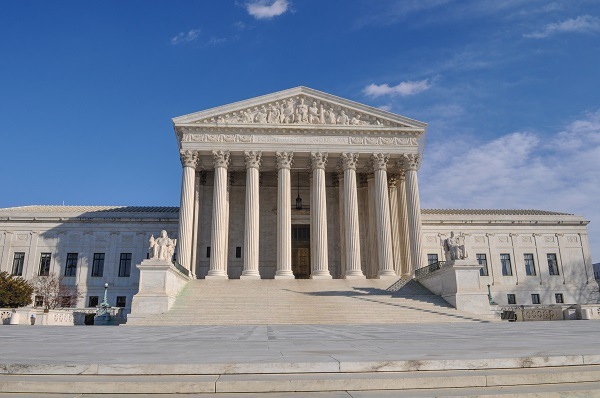On March 18, President Trump signed the federal Families First Coronavirus Response Act (the Act) into law.
The Act provides the following benefits for eligible American workers: (1) it expands the federal Family and Medical Leave Act (FMLA) to provide an extended period of unpaid or partially paid leave (this section is known as the Emergency Family and Medical Leave Expansion Act); (2) it provides for a limited period of paid sick leave (known as the Emergency Paid Sick Leave Act).
The provisions of the Act will go into effect on April 1 and will remain in effect until December 31, 2020, unless Congress extends the effective date.*
Below is a general summary of the key components of the Act and its potential effect on employers. Please note that the impact of the COVID-19 pandemic on businesses, and the legal landscape related thereto, are changing daily. Accordingly, there are still many unanswered questions, and the summary below will likely need to be updated. We will keep you apprised of any major developments.
EMERGENCY FAMILY AND MEDICAL LEAVE EXPANSION ACT (“E-FMLA”)
- What size employer is covered under the Act? The Act applies to all employers with fewer than 500 employees. The U.S. Secretary of Labor has the authority to issue regulations that (1) exclude certain healthcare providers or emergency responders and (2) “exempt small businesses with fewer than 50 employees” from this leave if it “would jeopardize the viability of the business as a going concern.” As of the date of this blog post, the U.S. Secretary of Labor has not issued any regulations and there is no indication when regulations will be forthcoming. Therefore, for now, the Act likely does not exempt small businesses, and covered employers that have not been required to comply with the FMLA will have to comply with the E-FMLA.
- Which employees are eligible to take E-FMLA leave? Any employee who has worked for the company for 30 calendar days or more and has a “qualifying need related to a public health emergency.”
- What is a “qualifying need related to a public health emergency”? The employee is unable to work (or telework) due to a need for leave to care for his or her son or daughter under 18 years of age if the school or place of care has been closed or a child care provider is unavailable because of public health emergency.
- How much leave must covered employers provide to eligible employees and what is the amount of paid leave? Covered employers must provide 12 weeks of leave in total. The first 10 days may be unpaid, but employees may use paid vacation, paid time off, or paid sick leave (including emergency paid sick leave, discussed below) during those 10 days. After the 10 days of unpaid leave, employers must provide paid leave for the remainder of the 12-week period. However, employers are only required to pay two-thirds of the employee’s regular rate of pay for the number of hours the employee would otherwise be scheduled to work. Fortunately for employers, the Act provides a cap on the amount of the payment – employers do not have to pay more than $200 a day or $10,000 in the aggregate per employee.
- Does the Act provide any job protections for eligible employees? Yes. Absent limited exceptions for employers with fewer than 25 employees, employees have the same reinstatement rights under E-FMLA as with leaves under FMLA.
- If an employee has already exhausted his or her available FMLA leave, is he or she entitled to E-FMLA leave? The Act does not expressly address this situation, but our best educated presumption is that employees who have already exhausted their 12 weeks of FMLA leave cannot take advantage of leave under E-FMLA. The federal government may need to issue a regulation to address this situation.
EMERGENCY PAID SICK LEAVE ACT
- What size employer must provide emergency paid sick leave? The Act applies to all employers with fewer than 500 employees, with the same potential exceptions discussed above.
- Which employees qualify for emergency paid sick leave? Regardless of how long they have worked for their employer, employees are entitled to receive emergency paid sick leave if they are unable to work (or telework) because of one of the following six reasons:
- They are subject to a federal, state, or local quarantine or isolation order related to COVID-19;
- They have been advised by a health care provider to self-quarantine due to concerns related to COVID-19;
- They are experiencing symptoms of COVID-19 and seeking a medical diagnosis;
- They are caring for an individual who is subject to a quarantine or isolation order or who has been advised by a health care provider to self-quarantine due to COVID-19 concerns;
- They are caring for a son or daughter (as defined by the FMLA) whose school or place of care is closed, or child care provider is unavailable, due to COVID-19 precautions; or
- They are experiencing substantially similar conditions as specified by the Secretary of Health and Human Services, in consultation with the Secretaries of Labor and Treasury.
- How much paid sick leave must employers provide to their employees? Eligible full-time employees receive 80 hours of pay at their regular rate of pay. Eligible part-time employees receive the number of hours they work on average in a two-week period. For eligible hourly employees whose schedules vary, employers may use a six-month average of the employees’ working hours to calculate the average daily hours. For eligible employees who did not work in the preceding six-month period, employers may use the number of hours the employers and employees agreed the employees would work upon hiring. If no such agreement exists, employers may calculate the appropriate number of hours of leave based on the average hours per day the employees were scheduled to work over the entire term of their employment. The Act provides a cap on this leave. If employees need sick pay for categories 1-3 above, the cap is $511 per day or $5,110 in the aggregate. If employees need sick pay for categories 4-6 above, they are paid at 2/3 their regular rate of pay with a cap of $200 per day or $2,000 in the aggregate. Finally, employers may require employees to follow reasonable notice procedures to continue to receive emergency paid sick leave after the first workday (or portion thereof) employees receive such paid leave.
- Are employers required to give notice to employees? Yes. Employers must post the Act’s requirements in conspicuous places on their premises where employment-related notices are customarily posted. The federal government should be issuing a model notice shortly.
- Other provisions: Paid sick leave does not carry over from year to year. Employers do not need to pay any unused sick leave upon termination. Employers cannot force employees to use other paid sick leave before this sick leave. Employees can use emergency paid sick leave during the 10 unpaid days of E-FMLA leave and then thereafter use E-FMLA leave. Finally, the Act contains an anti-discrimination and anti-retaliation provision.
TAX CREDITS
- Are tax credits available for employers who provide E-FMLA leave and, if so, what are they? Yes, to assist employers that need to fund E-FMLA leave, the Act provides a refundable tax credit equal to 100 percent of wages paid under the Act. You should contact your accountant or tax attorney to discuss the specific requirements and limitations of the tax credits under the Act.
- Are tax credits available for employers who provide emergency paid sick leave and, if so, what are they? Yes, to assist employers who need to fund emergency paid sick leave, the Act also provides a refundable tax credit to 100 percent of wages paid under the Act. Again, you should contact your accountant or tax attorney to discuss the specific requirements and limitations of the tax credits under the Act.
*This post has been updated. Previously we anticipated an effective date of April 2 for the Act.


